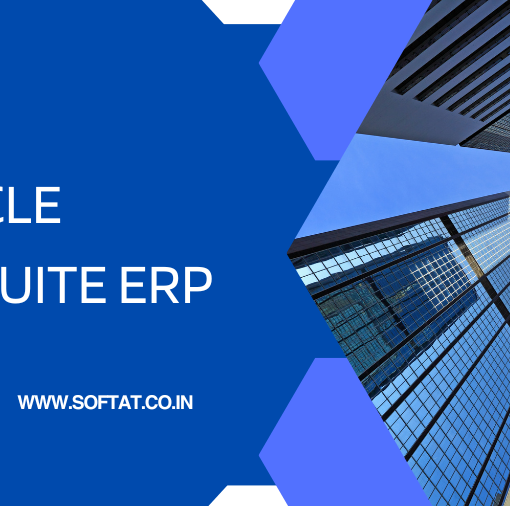SAP Business Warehousing
SAP Business Warehouse (BW) is a model-driven data warehousing software based on the SAP NetWeaver ABAP platform. It gathers, transforms, and saves data generated by SAP and non-SAP applications, making it accessible via built-in reporting, business intelligence, and analytics tools, as well as third-party software.
SAP BW is also a programming platform for creating and modifying data warehouses, performing data management operations, generating reports, and developing analytics applications. Business customers often use SAP BW via a developer-created application, such as an executive dashboard or a mobile app.
Unlike most data warehouse solutions, SAP BW allows you to create data warehouse objects such as data sources, data stores, and queries, which it then instantiates and manages in various ways depending on the platform it runs on and other constraints.
SAP BW Versions
BW was originally designed to enable online analytical processing (OLAP) on top of SAP’s transactional system R/3, which was designed for online transactions processing (OLTP). BW started off nearly solely focused on pulling data from SAP systems and reporting on it, but it gradually expanded its powers and flexibility.
Under the name Business Explorer, it evolved into a full-featured data warehouse system that included data gathering, data transformation, storage in both flat and relational cube models, a flexible query system, and a suite of reporting and business intelligence tools. The 7. x versions (which came after the 3. x versions) continued the change by adding new features and simplifying the data transformation scheme. Although the system could be used outside of an SAP environment, it was virtually exclusively used by SAP’s R/3 and CRM customers.
SAP launched a series of BW versions based on HANA after the introduction of the SAP HANA in-memory database. The BW Accelerator, which operated as a columnar query cache for BW data models in the 7. x versions, was the first sight of these. Then came the release of BW on HANA, a version based on BW 7. x but running entirely on the HANA database, which included HANA-specific enhancements.
BW/4HANA was released in 2017. It’s a new version of BW that gets rid of a lot of outdated capabilities and adds new data models that are better suited to HANA’s columnar in-memory architecture.
Advantages of SAP BW
BW’s model-driven nature provides it with numerous benefits as well as some drawbacks. The main disadvantage is that BW is a proprietary toolset, and finding BW developers is more difficult than finding programmers for common SQL data warehousing technologies. Once the model is specified, the customer has a lot of freedom when it comes to implementing platform modifications, and the system can take advantage of new platform features with little to no development work.
Customers on BW 7.5 who have persisted with a model-driven approach, for example, can switch between Oracle and HANA databases with minimal downtime. Similarly, when BW customers migrated to BW on HANA, those that maintained a model-driven architecture noticed that many of their defined data transformations and data activation procedures were shifted from the application server to the database.
SAP BW InfoObject
InfoObjects are the smallest unit in SAP BI and are used in Info Providers, DSOs, Multi Providers, and other SAP BI components. There are numerous InfoObjects in each Info Provider.
InfoObjects are used in reports to analyze the data stored and to provide information to decision makers. InfoObjects can be categorized into the following categories:
- Customer, Product, and other characteristics
- Quantity sold, currency, and so on.
- Key figures such as total revenue, profit, and so on.
- Year, quarter, and other time characteristics
InfoObject catalog is where InfoObjects are created. It is possible to assign an InfoObject to a different Info Catalog.
SAP Business Information Warehouse
SAP BW (SAP business information warehouse) provides the necessary structures and features to help businesses achieve their objectives. As a result, all essential business data from operational SAP applications and other data sources are integrated into SAP BW, where it is converted and consolidated.
Flexible reporting and analysis tools are also available to aid data analysis and interpretation. The information obtained can also be managed in terms of distribution. You may make secure decisions and take targeted actions for your organization based on the data you’ve analyzed.
SAP BW InfoCube
An InfoCube is a multidimensional dataset that is utilized in a BEx query for analysis. To implement the star schema, an InfoCube consists of a series of relational tables that are logically connected. In the star schema, a fact table is linked to many dimension tables.
The data is physically stored in an InfoCube. It is made up of several InfoObjects that are populated with staging data. It’s structured like a star schema. An InfoCube can be given the real-time characteristic. These Real-time InfoCubes are not the same as regular InfoCubes. SAP Business Warehousing
What is the difference between ECC and BW?
ECC (Enterprise Core Component) and BW (Business Warehouse) are two distinct components of the SAP (Systems, Applications, and Products) ecosystem. While both are part of the SAP suite, they serve different purposes and have different functionalities. Here’s a comparison of ECC and BW:
- ECC (Enterprise Core Component):
- ECC is the central component of the SAP Business Suite and serves as the operational system for managing business processes.
- It includes modules for various functional areas such as Finance (FI), Sales and Distribution (SD), Materials Management (MM), Human Resources (HR), Production Planning (PP), and more.
- ECC enables organizations to execute day-to-day business operations, manage transactions, store transactional data, and support business processes across different departments.
- It provides functionalities like order processing, inventory management, financial accounting, payroll processing, procurement, and more.
- ECC focuses on real-time transaction processing and data management.
- BW (Business Warehouse):
- BW is an enterprise data warehousing and business intelligence solution provided by SAP.
- It serves as a centralized data repository and analytics platform, collecting, storing, and transforming data from various sources for reporting and analysis.
- BW provides tools for data extraction, transformation, and loading (ETL), as well as data modeling and reporting capabilities.
- It allows organizations to consolidate and integrate data from different systems, perform data cleansing and aggregation, and create data models optimized for reporting and analysis.
- BW enables the creation of meaningful reports, dashboards, and data visualizations, providing insights and decision-making support to business users.
- It includes features like data extraction from ECC and other systems, data staging, data modeling, query and reporting tools, and data analysis capabilities.
In summary, ECC is the operating system that handles day-to-day business processes and transactions, while BW is a data warehousing and analytics solution that consolidates data from various sources, performs data transformations, and provides reporting and analysis capabilities. ECC focuses on real-time transaction processing, while BW focuses on data integration, data modeling, and analytical insights.





